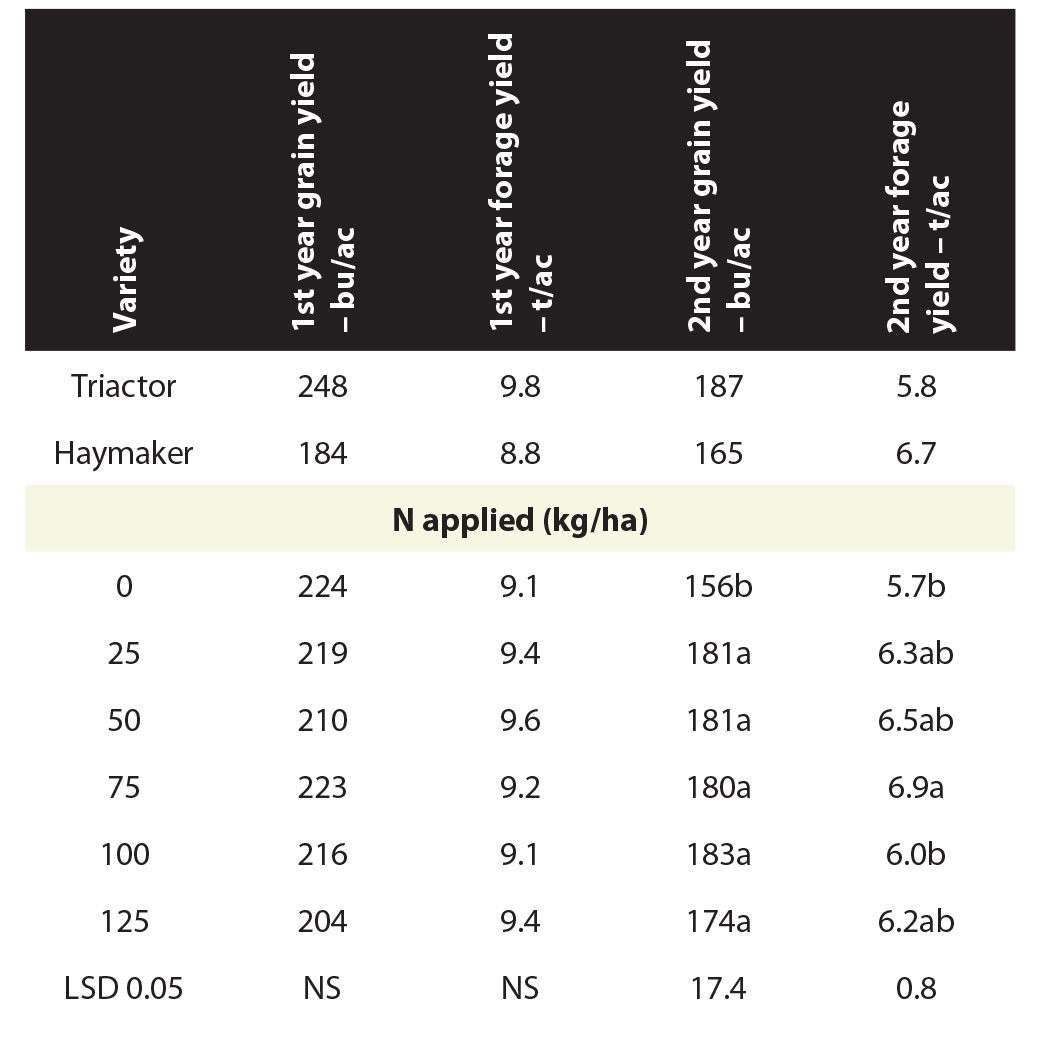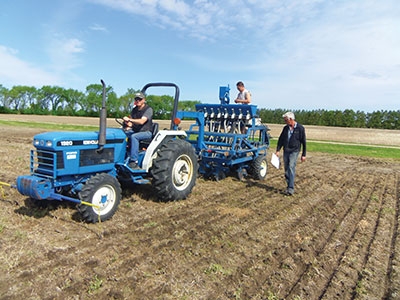
Features
Agronomy
Irrigation
Consider oats for irrigated alfalfa breaking
Oats can be a good rotational crop following alfalfa under irrigation. They can be grown relatively cheaply without nitrogen (N) fertilizer, have low seed costs and have very high yields. In years when oat prices are high, they can be a good choice.
“Our oat yields on first year alfalfa breaking were almost 250 bushels per acre under irrigation,” says Gary Kruger, irrigation agrologist with Saskatchewan Ministry of Agriculture at Outlook, Sask. “If a grower wants to take a holiday from high input costs, then oats can be a good option on alfalfa breaking.”
Kruger conducted a demonstration research trial in 2013 on one- and two-year alfalfa breaking to help determine the yield response of oat to different N fertilizer rates. The trial consisted of first year alfalfa breaking that was terminated in the spring with glyphosate, and second year alfalfa breaking with oats sown on canola stubble. The plots were sown with a no-till drill, and two oat varieties were planted: a milling variety, Triactor, and a forage variety, CDC Haymaker. The oats were fertilized at 0, 25, 50, 75, 100 and 125 kg of N per ha (kg/ha x 0.89 = lbs/ac). A split plot design was used, randomized and replicated four times.
The irrigated plots were at the Canada-Saskatchewan Irrigation Diversification Center at Outlook, Sask. The plots were seeded May 24, 2013. The forage plots were harvested August 20, 2013, and the milling variety was harvested for grain on September 19, 2013. The first year breaking plots were on non-saline areas, and the second year breaking plots were on a moderately saline site. Salinity was the reason for the lower oat yields on the second year breaking as compared to the first year breaking.
No N fertilizer required on first year breaking
There was no significant response to nitrogen application on the first year alfalfa breaking, indicating that farmers could successfully grow oats on alfalfa breaking without N fertilizer. The second year breaking showed a forage and grain yield response at 25 lbs N.
“Dryland farmers might doubt that you can grow alfalfa on first year alfalfa breaking without nitrogen, but with irrigation and warm soil temperatures, the soil is wet enough and the microbes active enough that you get good mineralization of N from the organic matter,” explains Kruger. “On dryland, you might not get that release unless you have very good early season rainfall that will replenish the soil moisture.”
Another advantage going for oats is that they are relatively low users of nitrogen. Research at Agriculture and Agri-Food Canada at Indian Head, Sask., found that even in an annual cropping system on dryland, oats rarely respond to more than 55 pounds of N on stubble.
“Oats seem to do well without a lot of nitrogen. We took out the alfalfa with a burndown and seeded without tillage, and still got enough mineralization for high yield. And even if you don’t get a high level of mineralization, oats are more forgiving because of their lower nitrogen requirements,” explains Kruger. (See Table 1.)
 |
| Table 1. Oat N-fertility on first and second year of alfalfa breaking in 2013. Means followed by the same letter are not significantly different at P=0.05. Source: Nitrogen Rate for Irrigated Oats on Terminated Alfalfa. ICDC. |
Kruger points out that there are other challenges to growing oats. With grain yields in the 250 bushels per acre range, there are a lot of bushels to deal with: hauling to the grain bins, having enough storage for those yields and in transport to markets. Additionally, market access may not always be close at hand.
Still, Kruger says that if growers want to diversify their rotations, oats could be a good crop to get into rotation, after one- or two-year alfalfa breaking.
“With irrigation, there are several crop options after alfalfa. I think oats is a good option if its price is favourable.”
October 2, 2014 By Bruce Barker
 Garry Hnatowich supervises tractor operator Harvey Joel and Don David on drill while direct seeding oats into terminated alfalfa. Oats can be a good rotational crop following alfalfa under irrigation.
Garry Hnatowich supervises tractor operator Harvey Joel and Don David on drill while direct seeding oats into terminated alfalfa. Oats can be a good rotational crop following alfalfa under irrigation.